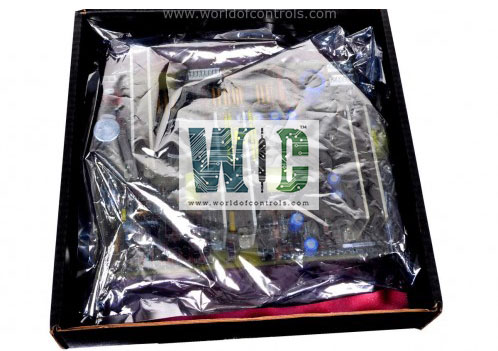SPECIFICATIONS
Part No.: IS200EXIBG1AEB
Manufacturer: General Electric
Country of Manufacture: United States of America (USA)
Size: 7.0 in x 13.0 in
Microprocessor: Intel Celeron 300 MHz
Operating System: QNX
Product Type: Bridge Interface Board
Availability: In Stock
Series: EX2100
Functional Description
IS200EXIBG1AEB is a bridge interface board developed by GE. It is a part of EX2100 control system. It facilitates a multitude of interface functions crucial for seamless communication between the exciter bridge and the EXIC board. These functions include current feedback, AC/DC voltage feedback, SCR gating, and metal oxide varistor fuse loss detection.
Features
- Versatile Compatibility: It can seamlessly integrate into both the 3300V and 6600V versions of the drive, offering flexibility in application across a range of voltage configurations. This adaptability ensures that the board remains an effective solution, regardless of the specific voltage requirements of the system.
- Mounting Configuration: Designed for convenient integration, the board mounts on the backside of the hinged panel that houses the EXIC board. This strategic positioning optimizes space utilization within the system, providing efficient cable routing and minimizing installation complexities. Additionally, this placement ensures easy access for maintenance and servicing tasks.
- Critical Interface Functions: Plays a pivotal role in enabling essential functions required for exciter bridge operation. By providing current and voltage feedback, the board ensures precise monitoring and control of electrical parameters, contributing to system stability and performance. Additionally, SCR gating functionality allows for accurate modulation of excitation levels, while metal oxide varistor fuse loss detection enhances system reliability by promptly identifying potential issues.
System Characteristics
- Modular Design for Versatility: The exciter system boasts a modular design, allowing for versatile configurations tailored to specific needs. This flexibility enables the assembly of exciter setups with a range of available output currents and different levels of system redundancy.
- Range of Power Sources: Multiple power sources are available to supply the exciter system, including potential, compound, or auxiliary sources. These options cater to diverse operational scenarios and offer resilience against power supply disruptions.
- Redundancy Options: The exciter system provides redundancy options to enhance system reliability. Users can opt for single or multiple bridges, warm backup bridges, and simplex or redundant controls, depending on the desired level of redundancy and fault tolerance.
- Power Supply Configuration: Power for the exciter is sourced either from a power potential transformer connected to the generator terminals or from an excitation transformer linked to an auxiliary bus. This ensures a reliable and stable power supply to the exciter system.
- Feedback Mechanisms: The exciter system utilizes generator line current and stator output voltage as primary feedback signals. These feedback mechanisms enable the exciter to regulate its operation and ensure optimal performance.
- Controlled Output: The controlled output to the exciter field is managed through DC voltage and current regulation. This controlled output is crucial for maintaining the desired excitation levels in the generator system.
The WOC team is always available to help you with your EX2100 requirements. For more information, please contact WOC.
Frequently Asked Questions
What is IS200EXIBG1AEB?
It is a bridge interface board developed by GE under the EX2100 series.
How does the exciter system draw power?
Power for the exciter system can be drawn from a power potential transformer connected to the generator terminals or from an excitation transformer linked to an auxiliary bus, ensuring a stable power supply.
What excitation systems are supported by the EX2100 platform?
The EX2100 platform supports both static excitation systems and rotating exciters, including brushless and Alterrex technologies, providing flexibility in excitation system selection.
What are the benefits of the exciter system's modular design?
The modular design allows for versatile configurations to meet specific operational requirements, providing flexibility in output currents, redundancy levels, and system setups.
How does the exciter system contribute to system reliability?
The system offers redundancy options such as multiple bridges, warm backup bridges, and simplex or redundant controls, enhancing system reliability and fault tolerance.
